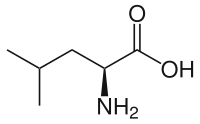
Photo from wikipedia
Objectives To develop and validate a prediction rule to identify well-appearing febrile infants aged ≤90 days with an abnormal urine dipstick at low risk of invasive bacterial infections (IBIs, bacteraemia… Click to show full abstract
Objectives To develop and validate a prediction rule to identify well-appearing febrile infants aged ≤90 days with an abnormal urine dipstick at low risk of invasive bacterial infections (IBIs, bacteraemia or bacterial meningitis). Design Ambispective, multicentre study. Setting The derivation set in a single paediatric emergency department (ED) between 2003 and 2017. The validation set in 21 European EDs between December 2017 and November 2019. Patients Two sets of well-appearing febrile infants aged ≤90 days with an abnormal urine dipstick (either leucocyte esterase and/or nitrite positive test). Main outcome Prevalence of IBI in low-risk infants according to the RISeuP score. Results We included 662 infants in the derivation set (IBI rate:5.2%). After logistic regression, we developed a score (RISeuP score) including age (≤15 days old), serum procalcitonin (≥0.6 ng/mL) and C reactive protein (≥20 mg/L) as risk factors. The absence of any risk factor had a sensitivity of 96.0% (95% CI 80.5% to 99.3%), a negative predictive value of 99.4% (95% CI 96.4% to 99.9%) and a specificity of 32.9% (95% CI 28.8% to 37.3%) for ruling out an IBI. Applying it in the 449 infants of the validation set (IBI rate 4.9%), sensitivity, negative predictive value and specificity were 100% (95% CI 87.1% to 100%), 100% (95% CI 97.3% to 100%) and 29.7% (95% CI 25.8% to 33.8%), respectively. Conclusion This prediction rule accurately identified well-appearing febrile infants aged ≤90 days with an abnormal urine dipstick at low risk of IBI. This score can be used to guide initial clinical decision-making in these patients, selecting infants suitable for an outpatient management.
Journal Title: Archives of Disease in Childhood
Year Published: 2020
Link to full text (if available)
Share on Social Media: Sign Up to like & get
recommendations!